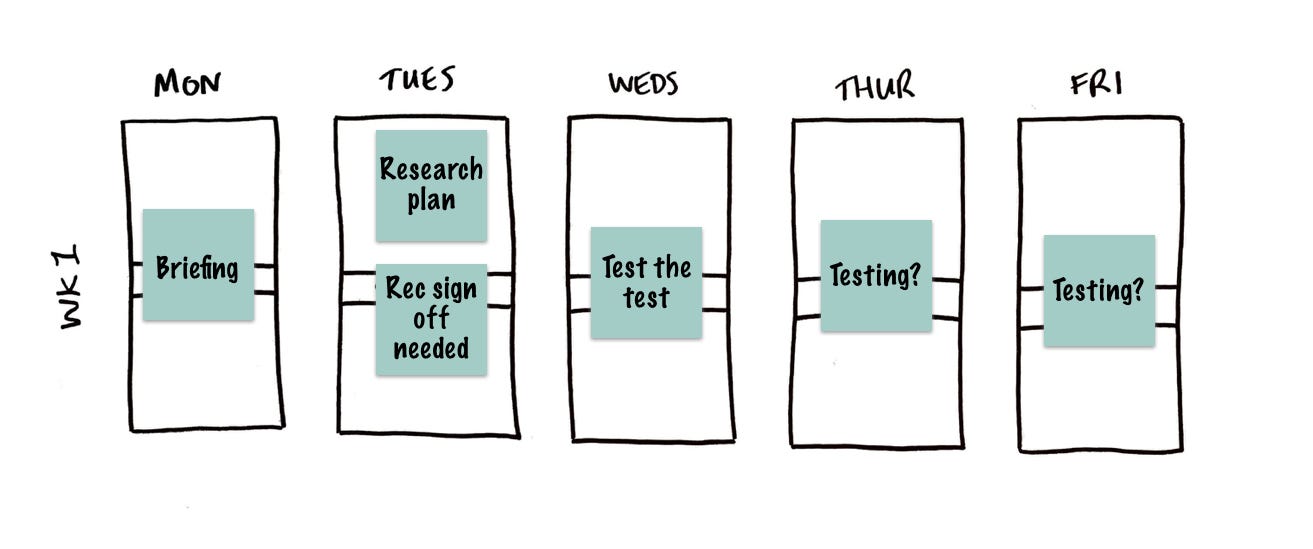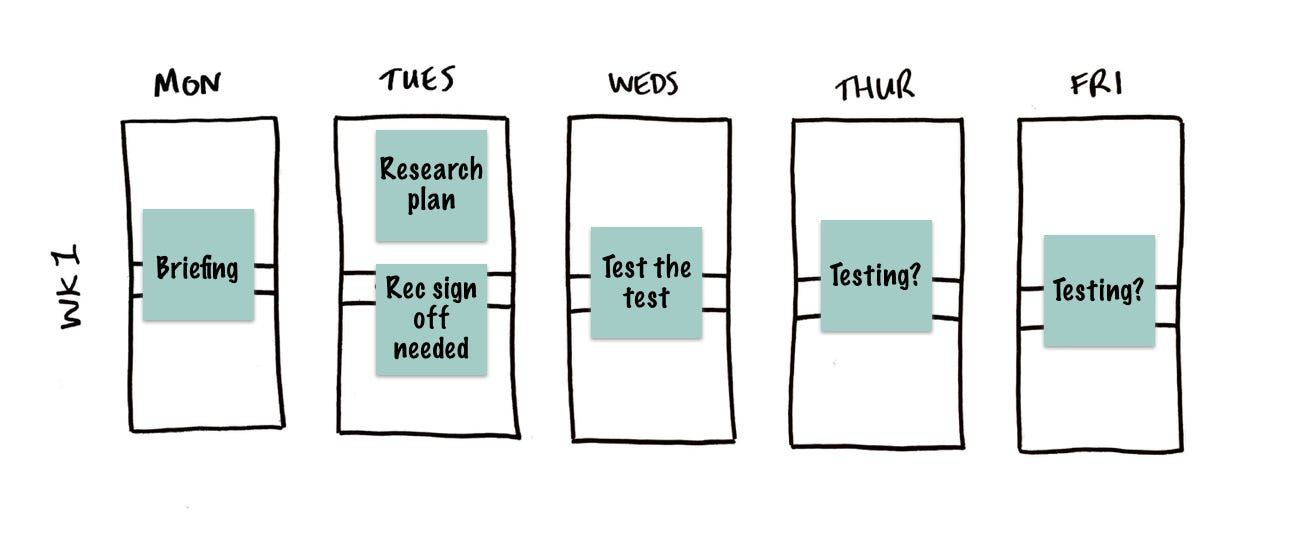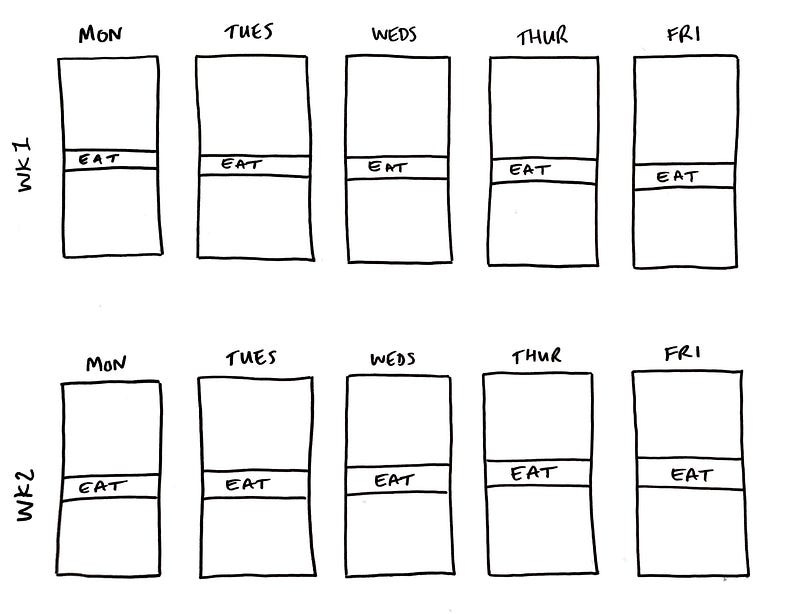Managing your time, removing risks and getting stuff done
Something I needed to learn fast when I started out in UX, was working out how long design and research tasks would take, and making sure this was communicated early, widely and often throughout the project.
So here is a write up of the training I give to newbies who are learning this for the first time.
👉 This article is going to be particularly useful to juniors in an agency or solo role.
Imagine this scenario — you start a piece of work, you realise you don’t have what you need, or you don’t have enough time to learn how to do something, or you run out of time, or you can’t get hold of someone for sign off.
Panic stations.
Now, if you’re a perfectionist and a control freak like me, then you’re going to need a way to manage this, or it’s going to get in the way of doing the actual work.
Crippling anxiety and fear of failure is no way to start a UX career.
From complex UCD projects to “can I have a wireframe”, I’ve found a quick way of planning time which also highlights risks, flags dependencies, and makes sure I have enough time to get work done, while managing stakeholders around me.
Show me the plan already
So here’s the approach you can take to every piece of work:
1. Establish the rough magnitude of time
Most projects even at the outset sound like <some days>, <some weeks> or <some months>. Make a rough guess.
2. Draw a physical map of that time
Here you are going to want to sub-divide your time into units. So if for example, someone asks you to run two days of lean user testing, you know it’s going to have to take less than 2 weeks end-to-end for everything from planning to reporting. That’s your starting point.
So you take your two weeks, and you map them out as days. In fact, for a time span this small, I’d sub-divide them out as half day blocks. Draw it with an actual pen. It helps your brain to work way better than hitting the software.
TOP TIP 👉 don’t forget lunch breaks! It’s easy to schedule work straight through breaks if you’re not careful)
Similarly, if you’re doing a 12 week project, you’re going to want to
Keep reading with a 7-day free trial
Subscribe to It Depends... to keep reading this post and get 7 days of free access to the full post archives.





